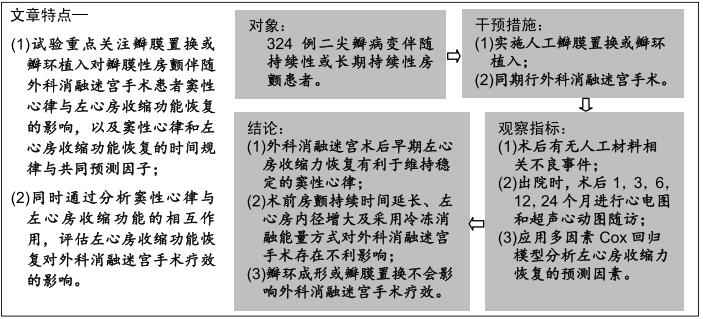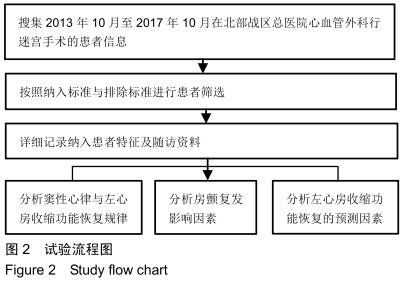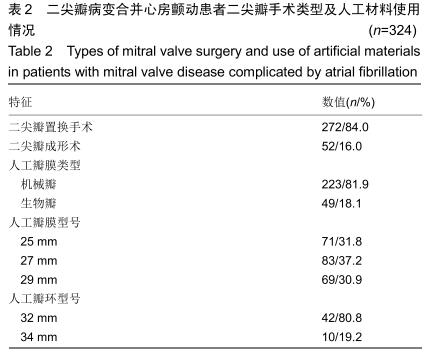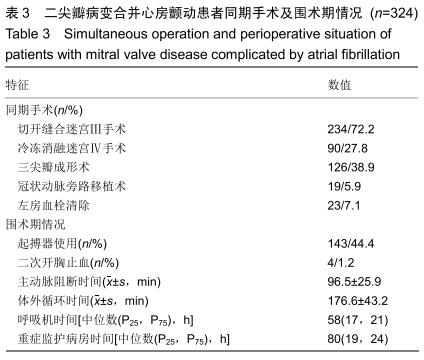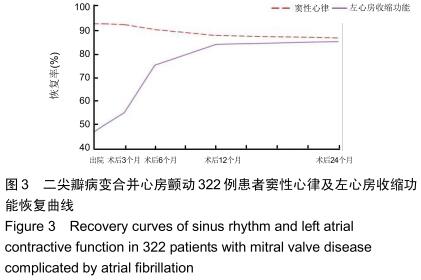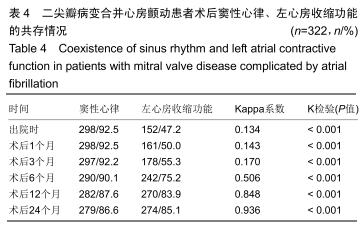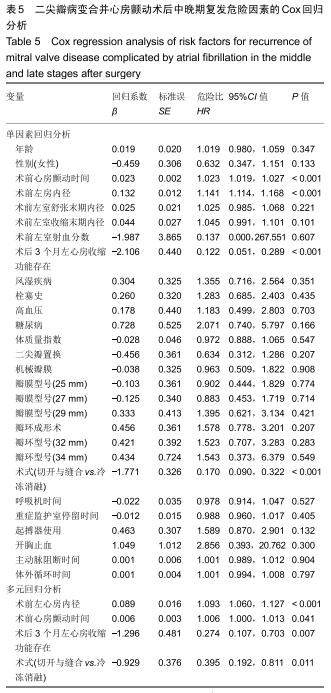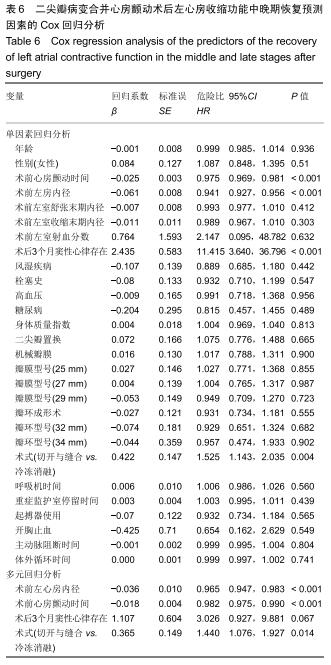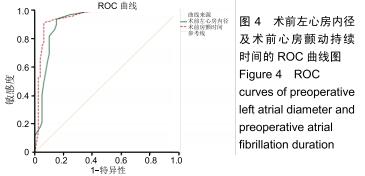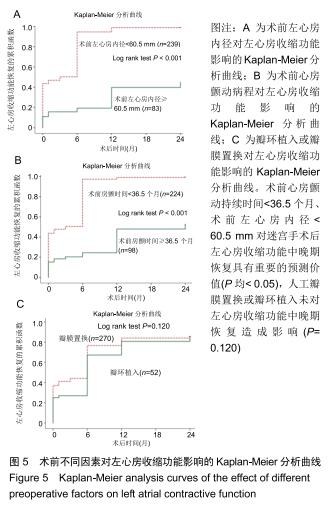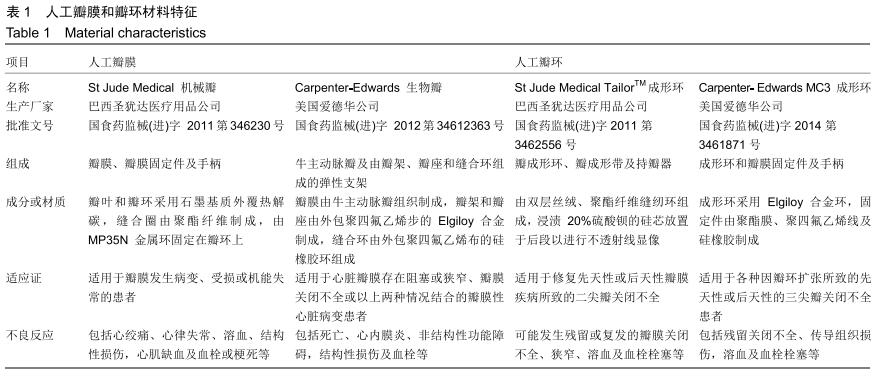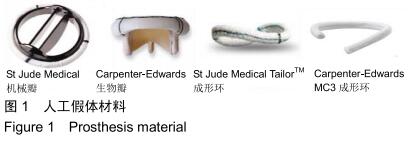|
[1] LIP GYH, COLLET JP, CATERINA R, et al. Antithrombotic therapy in atrial fibrillation associated with valvular heart disease: a joint consensus document from the European Heart Rhythm Association (EHRA) and European Society of Cardiology Working Group on Thrombosis, endorsed by the ESC Working Group on Valvular Heart Disease,Cardiac Arrhythmia Society of Southern Africa (CASSA), Heart Rhythm Society (HRS), Asia Pacific Heart Rhythm Society (APHRS), South African Heart (SA Heart) Association and Sociedad Latinoamericana de Estimulacion Cardiaca y Electrofisiologia (SOLEACE).Europace.2017;117(12):2215-2236.
[2] RUAENGSRI C, SCHILL MR, KHIABANI AJ, et al. The Cox-maze IV procedure in its second decade: still the gold standard? Eur J Cardiothorac Surg.2018;53(suppl_1):i19-i25.
[3] DENEKE T, KHARGI K, GREWE PH, et al. Efficacy of an additional MAZE procedure using cooled-tip radiofrequency ablation in patients with chronic atrial fibrillation and mitral valve disease. A randomized, prospective trial.Eur Heart J.2002;23(7):558-566.
[4] GILLINOV M,SOLTESZ EG.Atrial fibrillation in the patient undergoing mitral valve surgery: A once-in-a-lifetime opportunity.J Thorac Cardiovasc Surg.2018;155(3):995-996.
[5] LOMBARD FW, LIANG Y. Risk Factors for Mitral Valve Surgery: Atrial Fibrillation and Pulmonary Hypertension.Semin Cardiothorac Vasc Anesth.2019;23(1):57-69.
[6] FIRMANSYAH DK, SOESANTO AM, HANAFY DA, et al. Cox maze IV versus left atrial reduction for atrial contraction restoration.Asian Cardiovasc Thorac Ann.2019;27(5):353-361.
[7] NITTA T, ISHII Y, FUJII M, et al. Restoration of sinus rhythm and atrial transport function after the maze procedure: U lesion set versus box lesion set.J Thorac Cardiovasc Surg. 2016;151(4):1062-1069.
[8] 韩劲松,王辉山,汪曾炜,等.人工瓣环置入和迷宫Ⅲ型手术治疗退行性二尖瓣环扩张伴发心房颤动[J].中国组织工程研究,2015,19(52):3562-3569.
[9] 谢赛旗,王辉山,韩劲松,等.机械瓣膜或生物瓣膜置换及经典迷宫Ⅲ型手术治疗心房颤动合并巨大左心房和风湿性二尖瓣病变[J].中国组织工程研究,2019,23(26):4187-4193.
[10] 韩冰,王辉山,韩劲松,等.瓣膜置换或瓣环置入同期迷宫Ⅲ手术治疗老年二尖瓣病变合并持续性或长期持续性心房颤动[J].中国组织工程研究,2019, 23(22):3562-3569.
[11] WANG H, HAN J, WANG Z, et al. A prospective randomized trial of the cut-and-sew Cox-maze procedure in patients undergoing surgery for rheumatic mitral valve disease.J Thorac Cardiovasc Surg. 2018;155(2): 608-617.
[12] 肖雄,王辉山,韩劲松,等.冷冻消融迷宫术治疗瓣膜病合并心房颤动的围术期管理[J].中国体外循环杂志,2018,16(1):29-32.
[13] COX JL. A brief overview of surgery for atrial fibrillation. Ann Cardiothorac Surg. 2014;3(1):80-88.
[14] COX JL, CHURYLA A, MALAISRIE SC, et al. When Is a Maze Procedure a Maze Procedure? Can J Cardiol. 2018 ;34(11):1482-1491.
[15] ABO-SALEM E, LOCKWOOD D, BOERSMA L, et al. Surgical treatment of atrial fibrillation.J Cardiovasc Electrophysiol.2015;26:1027-1037.
[16] COX JL, SCHUESSLER RB, D'AGOSTINO HJ JR, et al. The surgical treatment of atrial fibrillation. III. Development of a definitive surgical procedure.J Thorac Cardiovasc Surg. 1991;101(4):569-583.
[17] WU CC, CHANG JP, CHEN MC, et al. Long-term results of radiofrequency maze procedure for persistent atrial fibrillation with concomitant mitral surgery.J Thorac Dis. 2017;9(12):5176-5183.
[18] AD N, DAMIANO RJ JR, BADHWAR V, et al. Expert consensus guidelines: Examining surgical ablation for atrial fibrillation.J Thorac Cardiovasc Surg.2017;153(6):1330-1354.e1.
[19] SCHILL MR, MUSHARBASH FN, HANSALIA V, et al. Late results of the Cox-maze IV procedure in patients undergoing coronary artery bypass grafting.J Thorac Cardiovasc Surg.2017;153(5):1087-1094.
[20] YUDA S, NAKATANI S, ISOBE F, et al. Comparative efficacy of the maze procedure for restoration of atrial contraction in patients with and without giant left atrium associated with mitral valve disease.J Am Coll Cardiol.1998;31(5):1097-1102.
[21] AD N, HENRY L, HUNT S, et al. The Cox-Maze III procedure success rate: comparison by electrocardiogram, 24-hour holter monitoring and long-term monitoring.Ann Thorac Surg. 2009;88(1):101-105.
[22] CHOI JB, KIM JH, CHA BK. Outcome of concomitant cox maze procedure with narrow mazes and left atrial volume reduction.Korean J Thorac Cardiovasc Surg.2014;47(4):358-366.
[23] WANG H, HAN J, WANG Z, et al. Efficacy of Cut-and-Sew Surgical Ablation for Atrial Fibrillation in Patients With Giant Left Atria Undergoing Mitral Valve Surgery: A Propensity-Matched Analysis. Semin Thorac Cardiovasc Surg.2019;31(4):796-802.
[24] BRENNAN AP, MARTIN W, ADAMS H, et al. Impact of the Cox-Maze IV Procedure on Left Atrial Mechanical Function.Heart Lung Circ. 2019; 28(12):1835-1840.
[25] JEON CS, SHIM MS, PARK SJ, et al.The absence of atrial contraction as a predictor of permanent pacemaker implantation after maze procedure with cryoablation.Korean J Thorac Cardiovasc Surg. 2017; 50(3):163-170.
[26] GHAVIDEL AA, JAVADPOUR H,SHAFIEE M, et al. Cryoablation for surgical treatment of chronic atrial fibrillation combined with mitral valve surgery: a clinical observation.Eur J Cardiothorac Surg. 2008; 33(6):1043-1048.
[27] HEMELS ME, GU YL, TUINENBURG AE, et al. Favorable long-term outcome of Maze surgery in patients with lone atrial fibrillation.Ann Thorac Surg.2006;81(5):1773-1779.
[28] PARK JH, LEE JS, KO YG, et al. Histological and Biochemical Comparisons between Right Atrium and Left Atrium in Patients with Mitral Valvular Atrial Fibrillation.Korean Circ J. 2014;44(4):233-242.
[29] LÖNNERHOLM S, BLOMSTRÖM P, NILSSON L, et al. Long-term effects of the maze procedure on atrial size and mechanical function. Ann Thorac Surg.2008;85(3):916-920.
[30] WANG M, YIP GW, WANG AY, et al. Peak early diastolic mitral annulus velocity by tissue Doppler imaging adds independent and incremental prognostic value.J Am Coll Cardiol.2003;41(5):820-826.
[31] PATTERSON T, ADAMS H, ALLEN C, et al. Indirect Annuloplasty to Treat Functional Mitral Regurgitation: Current Results and Future Perspectives.Front Cardiovasc Med.2019;6:60.
[32] KHERADVAR A, GROVES EM, SIMMONS CA, et al. Emerging trends in heart valve engineering: Part III. Novel technologies for mitral valve repair and replacement.Ann Biomed Eng.2015;43(4):858-870.
[33] KIM JB, YUN TJ, CHUNG CH, et al. Long-term outcome of modified maze procedure combined with mitral valve surgery: analysis of outcomes according to type of mitral valve surgery.J Thorac Cardiovasc Surg.2010;139(1):111-117.
[34] GILLINOV AM, SIRAK J, BLACKSTONE EH, et al. The Cox maze procedure in mitral valve disease: predictors of recurrent atrial fibrillation.J Thorac Cardiovasc Surg.2005;130(6):1653-1660.
[35] YUDA S, NAKATANI S, KOSAKAI Y, et al. Long-term follow-up of atrial contraction after the maze procedure in patients with mitral valve disease. J Am Coll Cardiol.2001;37(6):1622-1627.
[36] KIM HW, MOON MH, JO KH, et al. Left atrial and left ventricular diastolic function after the maze procedure for atrial fibrillation in mitral valve disease: degenerative versus rheumatic. Indian J Surg.2015;77(1):7-15.
[37] LOARDI C, ALAMANNI F, GALLI C, et al. Surgical Treatment of Concomitant Atrial Fibrillation: Focus onto Atrial Contractility. Biomed Res Int.2015;2015:274817.
[38] LI Z, WANG H, HAN J, et al. Gender differences in fibrosis remodeling in patients with long-standing persistent atrial fibrillation.Oncotarget. 2017;8(32):53714-53729.
[39] SUNDERLAND N, MARUTHAPPU M, NAGENDRAN M. What size of left atrium significantly impairs the success of maze surgery for atrial fibrillation?Interact Cardiovasc Thorac Surg. 2011;13(3):332-338.
[40] GAN GCH, FERKH A, BOYD A, et al. Left atrial function: evaluation by strain analysis. Cardiovasc Diagn Ther.2018;8(1):29-46.
[41] CURTA A, FICHTNER S, WAKILI R, et al. Prospective evaluation of left atrial function and late gadolinium enhancement with 3 T MRI in patients with atrial fibrillation before and after catheter ablation.Int J Cardiovasc Imaging.2019;35(3):499-504.
|
